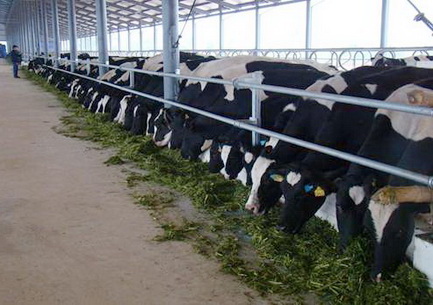The three richest Vietnamese men on the local stock exchange have already entered, or announced that they will, agriculture, from vegetable planting and livestock farming to animal feed manufacturing to keep up with rising demand for quality produce from the market.
Vietnam’s top realty developer, Vingroup, last week proposed that authorities in the northern province of Quang Ninh allow the firm to set up large-scale farms for vegetables, fruits, and other agricultural products in the locality, according to news website VnExpress.
The firm’s plan was warmly welcomed by both leaders of the Ministry of Agriculture and Rural Development and the provincial authorities, Quang Ninh has a population of 1.2 million and is home to tens of thousands of workers from other areas working in industrial zones across the province, plus seven million foreign and local tourists each year.
Vingroup, about 30 percent of which is owned by Pham Nhat Vuong, the richest man in Vietnam with a net worth Forbes said topping US$1.7 billion, has long planned to penetrate the new sector.
In a press briefing after the 2015 Lunar New Year, Vuong, chairman of Vingroup, said that after working with agricultural experts from Israel, he found that it is worthwhile to pour money into agriculture.
The group already owns several dozen hectares of agricultural land to realize Vuong’s dream.
The first dollar billionaire of Vietnam said his ambitious project will help boost the country’s agricultural development, and local consumers will be able to use clean agro-produce at low prices.
As of March 15, Vuong had total assets reaching VND20.99 trillion (about $1 billion) on the stock market, followed by Doan Nguyen Duc, chairman of Hoang Anh Gia Lai Group with more than VND7.6 trillion ($357.2 million), and Tran Dinh Long, chairman of Hoa Phat Group, with more than VND5.4 billion ($253.8 million), according to statistics by VnExpress.
But Vuong was the latest of the three to unveil a plan regarding the agriculture sector.
Prior to Vingroup’s announcement, Hoa Phat Group, one of the country’s big names in steel production and real estate, late last year said the firm’s long-term strategic investment will be focused on agriculture, and it will set aside human and financial resources for that investment.
Initially, the group will invest VND300 billion ($14.1 million) in establishing an animal feed plant with a capacity of 300,000 metric tons a year in the northern province of Hung Yen. The plant, which will launch its first batches of products in June this year, will help Hoa Phat earn around VND3 trillion ($141 million) in revenue a year in the next three years.
Vietnam’s animal feed market is worth around $6 billion annually, and the country is expected to churn out 15.6 million metric tons this year, up 6.1 percent year on year, according to the Ministry of Agriculture and Rural Development.
However, this number is not sufficient to meet market demand, as according to the sector’s development strategies, Vietnam needs 18 to 20 million metric tons of animal feed by the end of this year, and around 25-26 million metric tons by 2020.
To meet this demand, the Southeast Asian country has spent billions of dollars importing animal feed, such as $3.3 billion in 2014.
In addition, the market is still in the hands of foreign rivals, as a report from the Association of Livestock showed that joint ventures and 100-percent foreign-invested firms accounted for over 60 percent of total feed production in 2014.
Doan Nguyen Duc, chairman of conglomerate Hoang Anh Gia Lai, which previously concentrated on real estate, turned his head to agriculture by setting up rubber, sugarcane, palm oil, and corn plantations in Laos and Cambodia in 2008 after recognizing that the local realty sector has many potential and cyclical risks.
As of mid-2014, Hoang Anh Gia Lai owned about 44,500 hectares of rubber, 8,000 hectares of sugarcane, 17,300 hectares of oil palm, and 5,000 hectares of corn. Taking advantage of available agricultural by-products, Hoang Anh Gia Lai last year executed a plan to raise 100,000 cows locally.
The firm and its partner, Ho Chi Minh City-based milk manufacturer Nutifood, on Wednesday reached a deal with the authorities in the northern province of Ha Nam to build a chain of Nutifood-model dairy farms and develop the local dairy cow herd.
They will run training courses for local dairy farmers on technical and scientific processes of breeding Australian dairy cows imported by the firm, or any other kind of dairy cows these farmers want to raise.
With the construction of the largest dairy plant in the northern region, a VND1.6 trillion ($75.2 million) milk plant with a capacity of 200 million liters of liquid milk and 31,000 metric tons of milk powder per year in the province’s Thanh Liem District, Nutifood is committed to buying all the raw milk produced by local farmers, said Tran Thanh Hai, chairman of Nutifood.
Like us on Facebook or follow us on Twitter to get the latest news about Vietnam!


















































